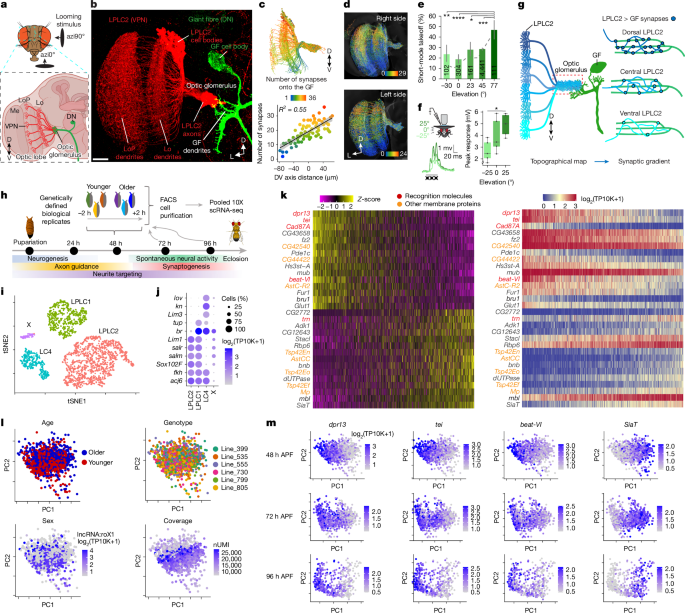
"The transformation of visual signals to motor commands in animals involves specialized neurons called VPNs, which play a key role in their visuomotor coordination."
"The connectivity of neurons responsible for visuomotor transformations is influenced by genetic predispositions and experiential learning, revealing the complexity of animal behavior and neural circuitry."
"Visual inputs in VPNs create a feature-detecting map in the optic lobe, yet most axonal projections lose spatial order, demonstrating a complex neural processing mechanism."
"Research indicates that various neuron types interact within the central brain, indicating a sophisticated mechanism for translating visual information into precise directional movements."
The article discusses the role of specific neurons, known as VPNs, in the visuomotor transformation process across various species. These neurons interact to translate visual information from the eye into directional movements through complex neural circuitry in the brain. Their connection and functionality illustrate the influence of genetic and experiential factors in shaping behavior. The mechanism also reveals that while initial visual input is organized, axonal projections from these neurons often lose this order, indicating a multifaceted approach to how organisms process and react to their visual environment.
Read at Nature
Unable to calculate read time
Collection
[
|
...
]